This wonderful Cornish workshop and museum is dedicated to the legacy of studio pottery trailblazer Bernard Leach
The colourful world of textile genius Bernat Klein
The colourful world of textile genius Bernat Klein
24 Oct 2022
It’s 100 years since the visionary textile designer and colourist Bernat Klein was born. As an exhibition about him prepares to open in Scotland, Jane Audas has a preview
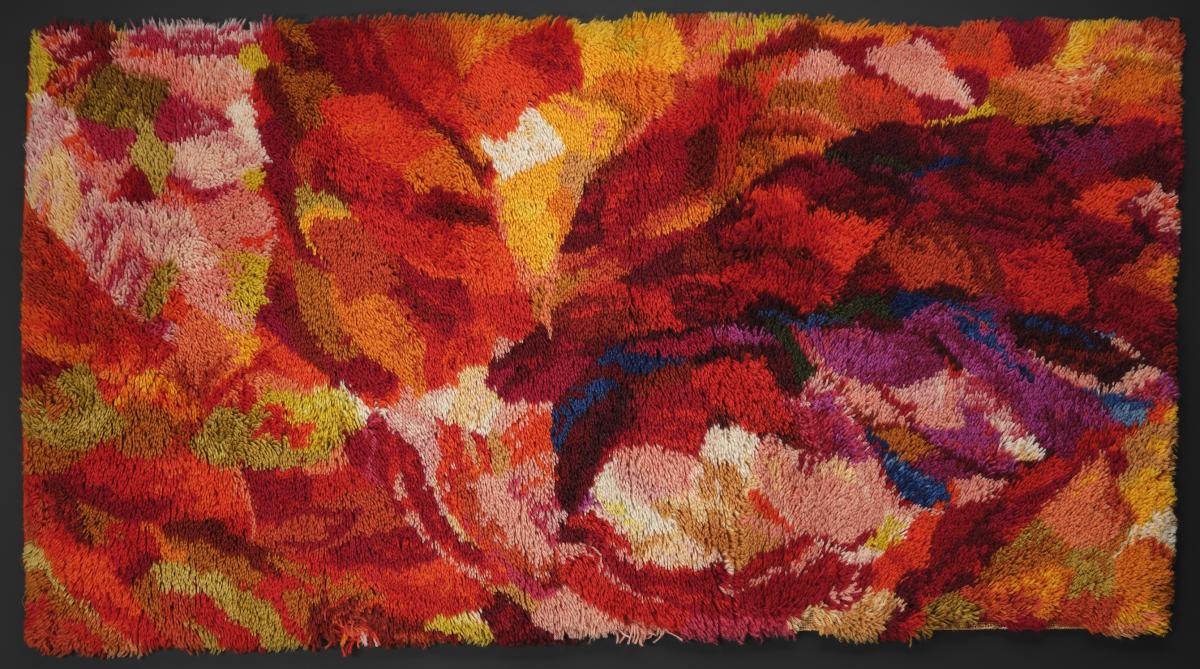 Bernat Klein’s Tulip Petals rug, c. late 1960s – early 1970s. Credit: © National Museums Scotland
Bernat Klein’s Tulip Petals rug, c. late 1960s – early 1970s. Credit: © National Museums Scotland
An émigré textile designer and artist born in Serbia in 1922, Bernat Klein came to Britain in 1945. He made his business (founded in 1952) and home (a groundbreaking modernist gem called High Sunderland, designed by architect Peter Womersley) in Scotland, and was to stay there for the rest of his life, putting Scottish fashion on the map in the 1960s.
The National Museum of Scotland holds Klein’s archive, comprising some 4,000 pieces. In this upcoming exhibition – Bernat Klein: Design in Colour – we’ll see his textiles, paintings, rugs, yarns and all sorts of related objects. It is a show that proves Klein was the daddy of our current obsession with colour in fashion and interiors.
Klein studied, developed and designed using a colour-up process that he was passionate about. Lisa Mason, assistant curator, modern and contemporary design at the museum and curator of the exhibition, says his eye for colour can be traced back to his training in painting and textiles at the Bezalel Academy of Arts and Design in Jerusalem. He studied there under artist Mordecai Ardon (1896–1992), an alumnus of the Weimar Bauhaus, where colour theory was central to the teaching of masters like Josef Albers and Paul Klee.
In 1945 Klein came to the UK to study textile technology at the University of Leeds. His education gave him a special outlook on textile design – one that would serve him well. 'He had this quite unique combination of a European modernist education and a really thorough grounding in the fundamentals of textile manufacture,’ says Mason. ‘These two things made him very successful.’
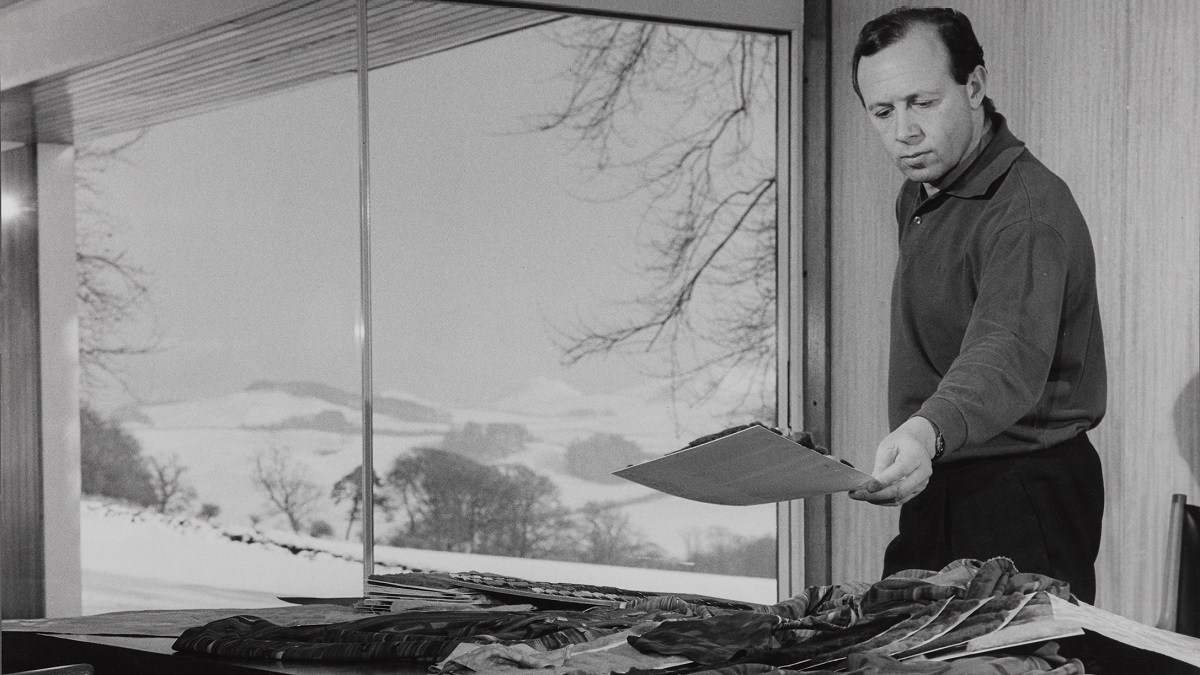 Bernat Klein at his home High Sunderland, 1963–64. Credit: © Bernat Klein Behr Photography, © National Museums Scotland
Bernat Klein at his home High Sunderland, 1963–64. Credit: © Bernat Klein Behr Photography, © National Museums Scotland
'Klein had a strong faith in design as an entity and how it can impact people's lives for the better’
Colour master
The earliest item in the museum’s archive is his University of Leeds sketchbook from 1947. It will be in the exhibition, open at a page of designs for textiles based on the colours of seashells. It shows, Mason reflects, that Klein started as he would go on. ‘You can really see his burgeoning fascination with colour and colour relationships. And how he took colour inspiration from the natural world.’
Throughout Klein's career there was a symbiotic relationship between his paintings, which were semi-abstract and inspired by Seurat’s pointillism, and his textile designs.
He carefully matched colour to colour in his paintings, and thread to thread in his textiles. That work was aided by home-made colour selection tools, some of which are in the exhibition. His colour box from the 1970s is a set of sheets painted with a full range of tonal values for each colour, all housed in a home-made box. It is a rare example of a textile designer’s process, revealing a little bit about the how and why of it all.
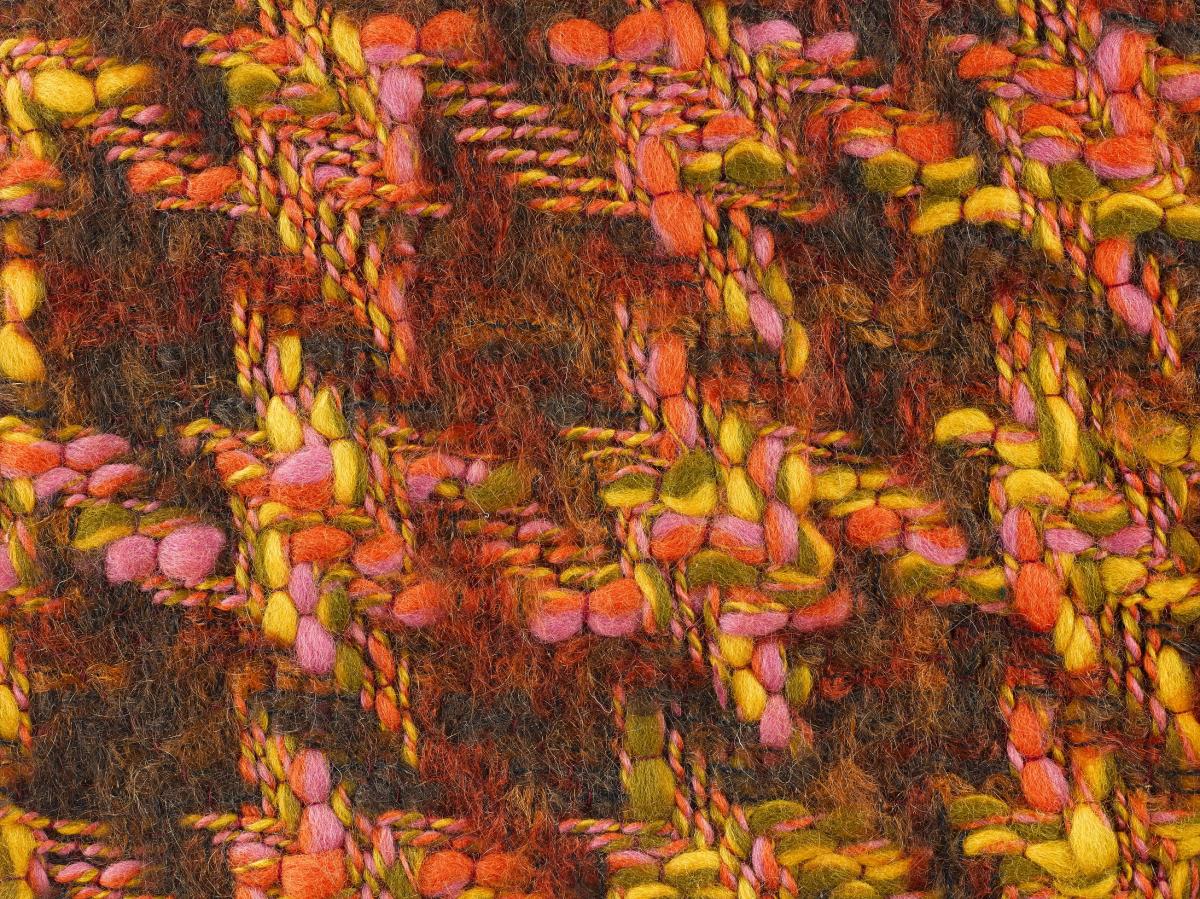 A sample of fashion fabric Maple, 1961. Credit: © National Museums Scotland
A sample of fashion fabric Maple, 1961. Credit: © National Museums Scotland
‘The exhibition starts with “Modernism and Landscape”, looking at the Scottish Borders landscapes Klein drew inspiration from’
From Chanel to mail order
Klein launched his first company, Colourcraft, in Galashiels in 1952. Achieving commercial success by weaving head squares for Marks & Spencer and British Home Stores enabled him to start developing more experimental textiles aimed at the couture market.
This is how his work came to carry the Chanel label, which in turn brought him more couture clients. At one time he even staged a fashion show at home, at High Sunderland, a house as chic as his designs. In the exhibition there is a Chanel mohair tweed suit from 1960 – the first couture outfit to use a Klein textile – on loan from the Chanel archive in Paris. The exhibition also highlights the work of Klein's wife, Margaret. She was a director of Bernat Klein Ltd and key to the success of the business. In 1960 she designed the knitting patterns to accompany the company's new yarns for the home knitting market. And she later designed and managed the production of Bernat Klein knitwear sold through mail order.
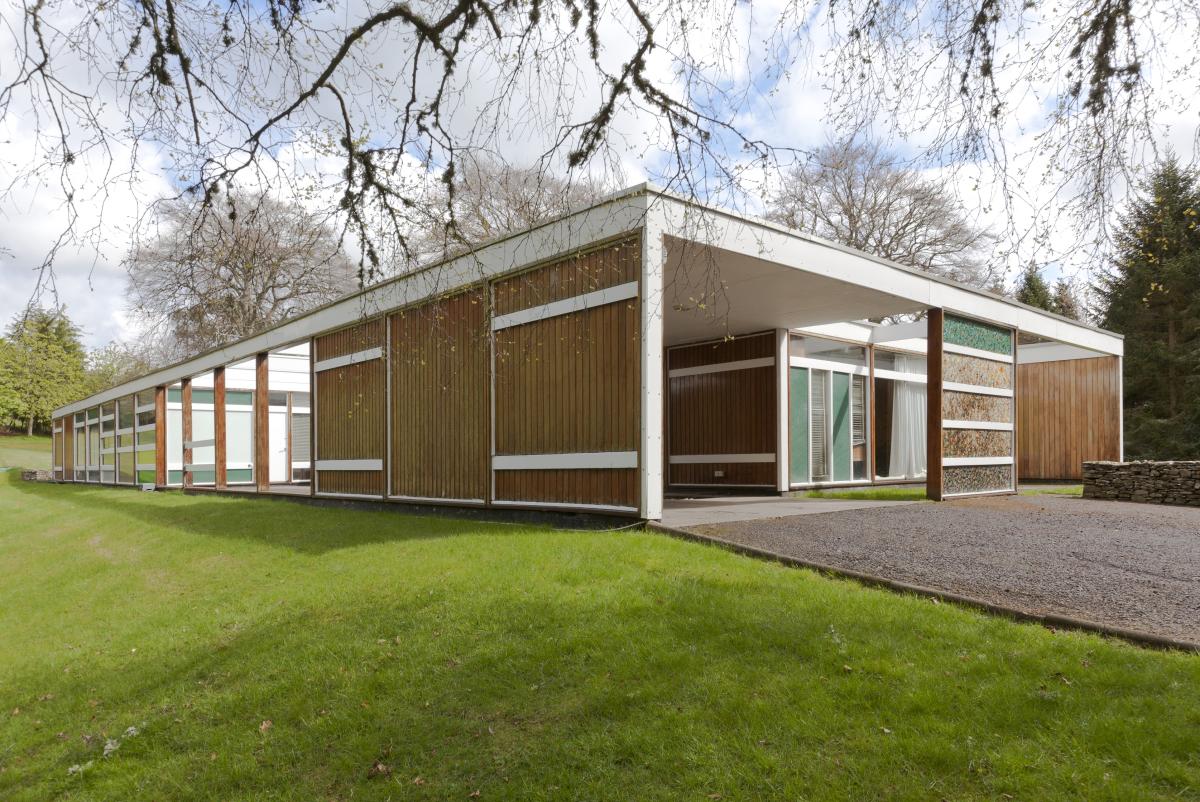 Bernat and Margaret Klein’s home, High Sutherland, designed in 1957 by Peter Womersley. Credit: © National Museums Scotland
Bernat and Margaret Klein’s home, High Sutherland, designed in 1957 by Peter Womersley. Credit: © National Museums Scotland
Lisa Mason has curated the exhibition thematically rather than chronologically, to show the breadth of Klein's practice. The exhibition starts with ‘Modernism and Landscape’, looking at the Scottish Borders landscapes Klein drew inspiration from, and the Peter Womersley commission for his fabulous house and studio. ‘Colour, Cloth and Couture’ and ‘Branding and Identity’ are followed by the ‘Designing Interiors’ section, where we see Klein’s 1970s designs for the Department of the Environment. These coordinated ‘vivid colour’ interiors schemes for government buildings must have been a sight to see. This section also covers Klein’s extensive work in contract interiors, and his successes in the Scandinavian interiors market.
The final part of this show, ‘New Markets’, covers Klein's work with printed and synthetic textiles, the company's mail order and ready-to-wear business, and Margaret’s Scottish hand-knitting empire.
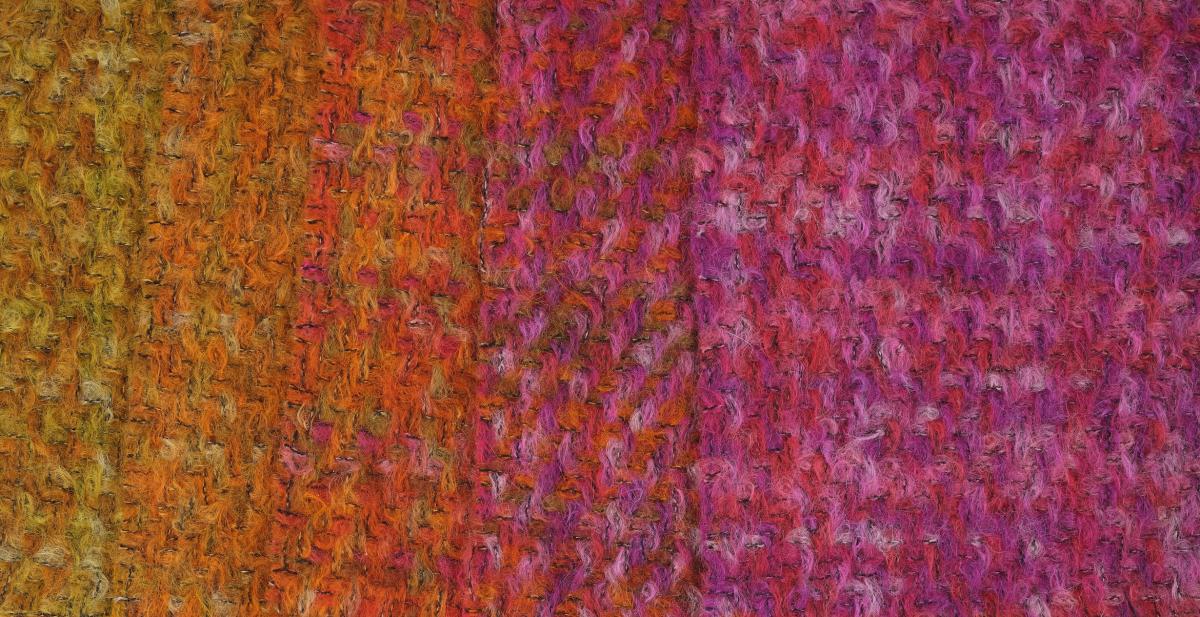 A group of six woven fabric samples in mohair tweed, c.1965. Credit: © National Museums Scotland
A group of six woven fabric samples in mohair tweed, c.1965. Credit: © National Museums Scotland
Taking the long view
Klein's story covers a long career (he died in 2014) and draws largely on the huge archive. Mason began her work at the museum in 2012, cataloguing the Klein archive. Now she has come full circle, curating the centennial exhibition of Klein's birth, which seems appropriate.
With Bernat Klein: Design in Colour she has been able to contextualise Klein’s career and designs and reveal their relevance today. ‘Klein had a strong faith in design as an entity and how it can impact people’s lives for the better,’ she states. ‘And his ideas towards consumption, which were really ahead of their time, relate to the debates we're having today about slow design and sustainability. His vision was uncompromising.’
See
Bernat Klein: Design in Colour
National Museum of Scotland, Edinburgh
5 November 2022–23 April 2023
nms.ac.uk/exhibitions-events/exhibitions/national-museum-of-scotland/bernat-klein-design-in-colour/
For more
The Bernat Klein Foundation will mark the centenary with a series of events and a book, Bernat Klein, to accompany the exhibition. See bernatkleinfoundation.org
About the Author
Jane Audas
Jane Audas is a writer and curator with a special interest in craft and design history
JOIN OUR MAILING LIST
Become an instant expert!
Find out more about the arts by becoming a Supporter of The Arts Society.
For just £20 a year you will receive invitations to exclusive member events and courses, special offers and concessions, our regular newsletter and our beautiful arts magazine, full of news, views, events and artist profiles.
FIND YOUR NEAREST SOCIETY
MORE FEATURES
Ever wanted to write a crime novel? As Britain’s annual crime writing festival opens, we uncover some top leads
It’s just 10 days until the Summer Olympic Games open in Paris. To mark the moment, Simon Inglis reveals how art and design play a key part in this, the world’s most spectacular multi-sport competition



